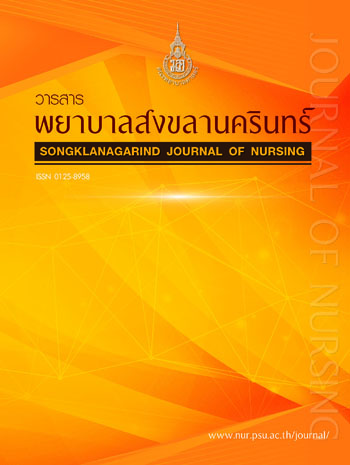Dyspnea Management in Patients with COPD: Non-Pharmacological Strategies
Main Article Content
บทคัดย่อ
Dyspnea in patients with chronic obstructive pulmonary disease (COPD) is a complex symptom. It is most commonly understood as the subjective experience of difficulty in breathing due to airflow
limitation that is not reversible. Its consequences are multidimensional involving all aspects of the patients’ life including physical distress, psychological distress, as well as social isolation and high economic burden. It is a life-threatening symptom that could result in death or can greatly impair their quality of life. Nurses play a crucial role in helping the patients and their families learn how to prevent and manage the symptom. It is essential for nurses to understand its signs, symptoms, as well as the management strategies. Dyspnea management for patients with COPD consists of three strategic types: pharmacological strategies, non-pharmacological strategies, and other alternative treatments. This paper aims to describe mechanisms of dyspnea, its impact on the patients’ life, and strategies for dyspnea management focusing on nonpharmacological strategies. These management strategies suggesting by nurses are important as they can be
performed independently; however, they were reported as less frequently used in the patients’daily life. This paper will greatly benefit nurses who wish to provide more effective health care guidelines for the patients with COPD to better manange the symptom and to enhance their quality of life.


